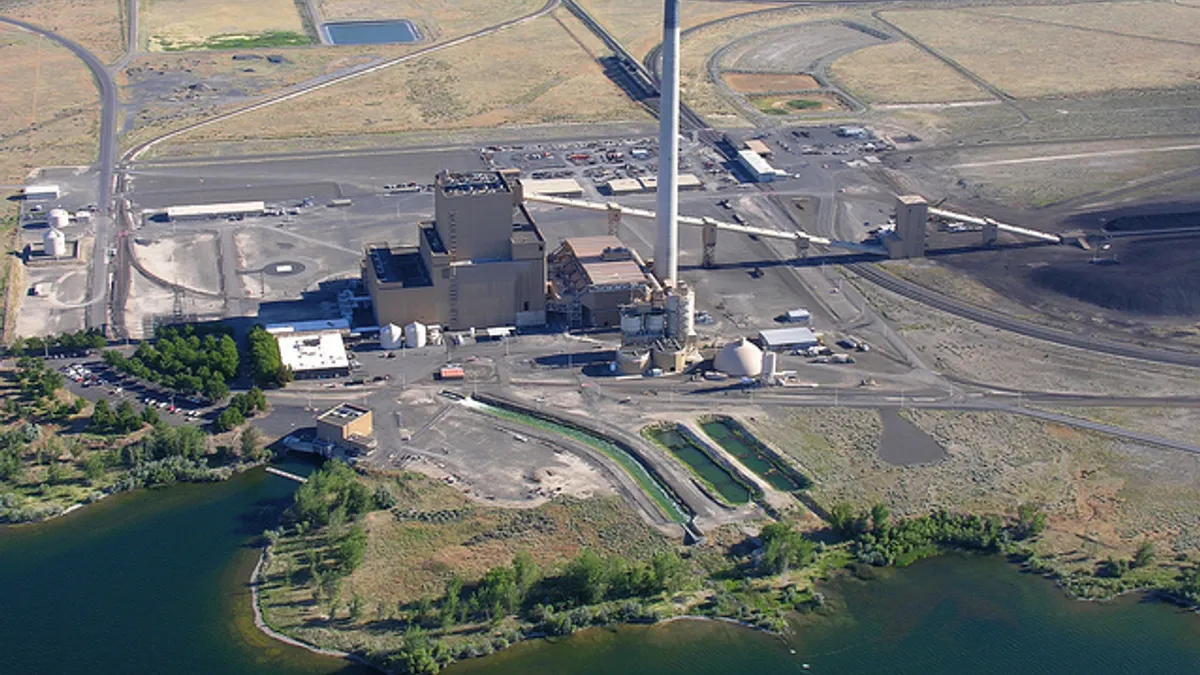Dive Brief:
- Portland General Electric (PGE) will triple the amount of clean energy it delivers to customers by 2030, en route to managing a zero emissions grid by 2040 as required by a new state law. The utility on Friday made three filings with the Oregon Public Utility Commission, sketching out a plan to achieve the new targets.
- PGE said it will need to acquire 1,500-2,000 MW of clean and renewable resources, along with 800 MW of "non-emitting dispatchable capacity resources" to meet 2030 interim decarbonization targets, and is seeking in a solicitation up to 1,000 MW to come online by the end of 2024.
- Within the next decade, PGE told regulators it estimates up to a quarter of the power needed on the hottest and coldest of days could come from distributed energy resources (DERs), including solar, batteries, and electric vehicles.
Dive Insight:
In a Distribution System Plan filed with regulators, PGE described how it plans to meet the evolving needs of its customers through a growing volume of DERs on its system.
The utility developed an in-house model, AdopDER, "to conduct bottom-up DER forecasting and assess DER potential at the system- and locational-level," according to the report. AdopDER leverages an open modeling framework of the building and vehicle stock in PGE's territory, "with market-level adoption forecasts, creating a rich, integrated view of how different DER and electrification technologies complement and compete under different conditions."
The model "represents a paradigm shift," PGE said, and the open-source framework for DER forecasting was developed by three consultants: Cadeo Group, The Brattle Group and Lighthouse Energy Consulting.
PGE said in a statement that by 2030 "as much as 25% of the power needed on the hottest and coldest of days could come from customers and distributed energy resources." Distributed solar and storage on its system could quadruple in that time, the utility said. And there are 35,000 electric vehicles on Oregon roads today, while the state has set a goal to reach more than 1 million by 2030.
“Working collaboratively with our stakeholders, we are advancing plans to add more renewables and non-emitting resources and partnering with our customers on building an equitable, two-way electric grid," PGE Vice President of Strategy, Regulation and Energy Supply Brett Sims said in a statement.
Along with its distribution plan, PGE filed with regulators a request for proposals (RFP) to procure more clean energy, and requested a one-year extension to March 2023 to file its next integrated resource plan to align it with Oregon’s new clean energy law, HB 2021.
Oregon Gov. Kate Brown, D, signed the law in July. It requires the state's largest utilities to eliminate greenhouse gas emissions from their electricity supply by 2040, with interim targets to reduce emissions 80% by 2030 and 90% by 2035.
In PGE's request for proposals, the utility is seeking approximately 1,000 MW of clean or renewable resources, including 375-500 MW of renewables, 375 MW of non-emitting capacity, and 100 MW for a green tariff option it offers. All resources must be online by the end of 2024, with the exception of pumped hydro resources, which require longer lead times.
“We hear our customers loud and clear: they want cleaner, greener affordable energy as quickly as possible," Sims said.
PGE is also "working to accelerate its exit from the coal-fired Colstrip plant by the end of 2025," it said in a statement. Last week, the utility and other co-owners of the Montana plant, including Avista, Pacificorp and Puget Sound Energy, won a victory when a federal judge temporarily blocked a state law aiming to save Montana coal plants from closure.
PGE shut down its Boardman coal plant — the last operating coal-fired plant in Oregon — almost exactly a year ago.
"As we advance to a 100% clean energy supply, we are often replacing base-loaded thermal resources with variable energy resources like wind and solar," the utility said in its distribution plan. This in turn creates the need for more grid flexibility.
"It is imperative we find ways to incentivize customers to bring their flexibility and clean resources to the grid to participate in the greater decarbonized energy system," PGE told regulators.














